If you’d like to branch out into growing less commonly cultivated species, you might want to give chestnut mushrooms a try! This mushroom is absolutely lovely, has a wonderful flavor, and has beginner-friendly growing requirements.
If you want to learn how to grow chestnut mushrooms at home indoors, read on.
What is the Chestnut Mushroom?
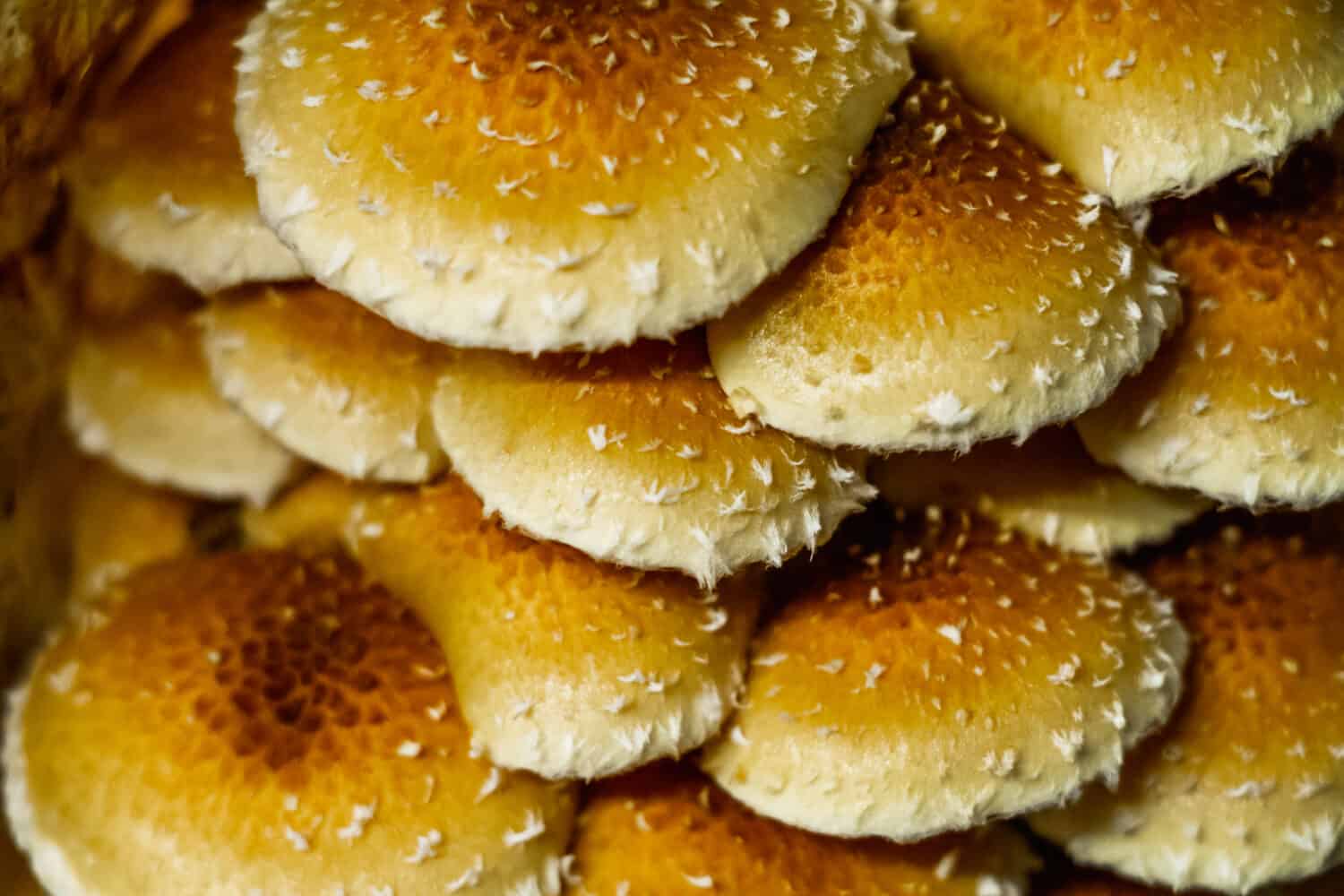
A close up of some chestnut mushrooms.
©Andy Holbeck/Shutterstock.com
The chestnut mushroom (Pholiota adiposa) is a scalycap mushroom belonging to the Strophariceae family of the Agaricomycetes class. This mushroom is endemic to temperate woodlands across North America, Asia, and Europe.
Ecology
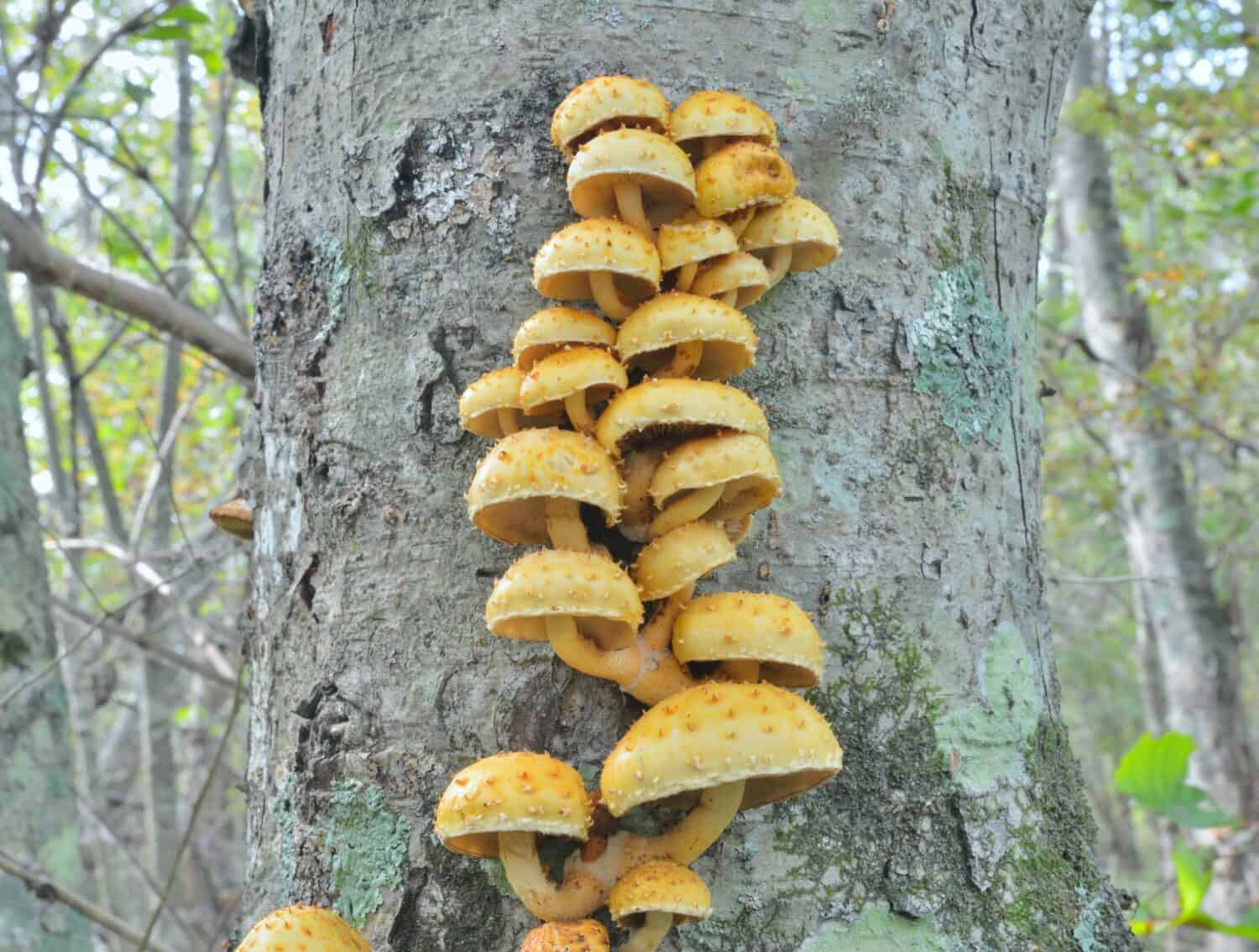
A closeup of chestnut mushrooms growing in their natural habitat.
©Kirsanov Valeriy Vladimirovich/Shutterstock.com
Largely, the chestnut mushroom is associated with growing on the deadwood of beech trees, but you may also find it on poplars, oaks, and other dead hardwoods. Ecologically, Pholiota adiposa is primarily a white-rot saprobic fungus, deriving its nutrients from the dead hardwood from which it grows. But, it can also display weakly parasitic behavior, especially on weakened beech trees. You can typically find this mushroom in late summer through fall.
Identification
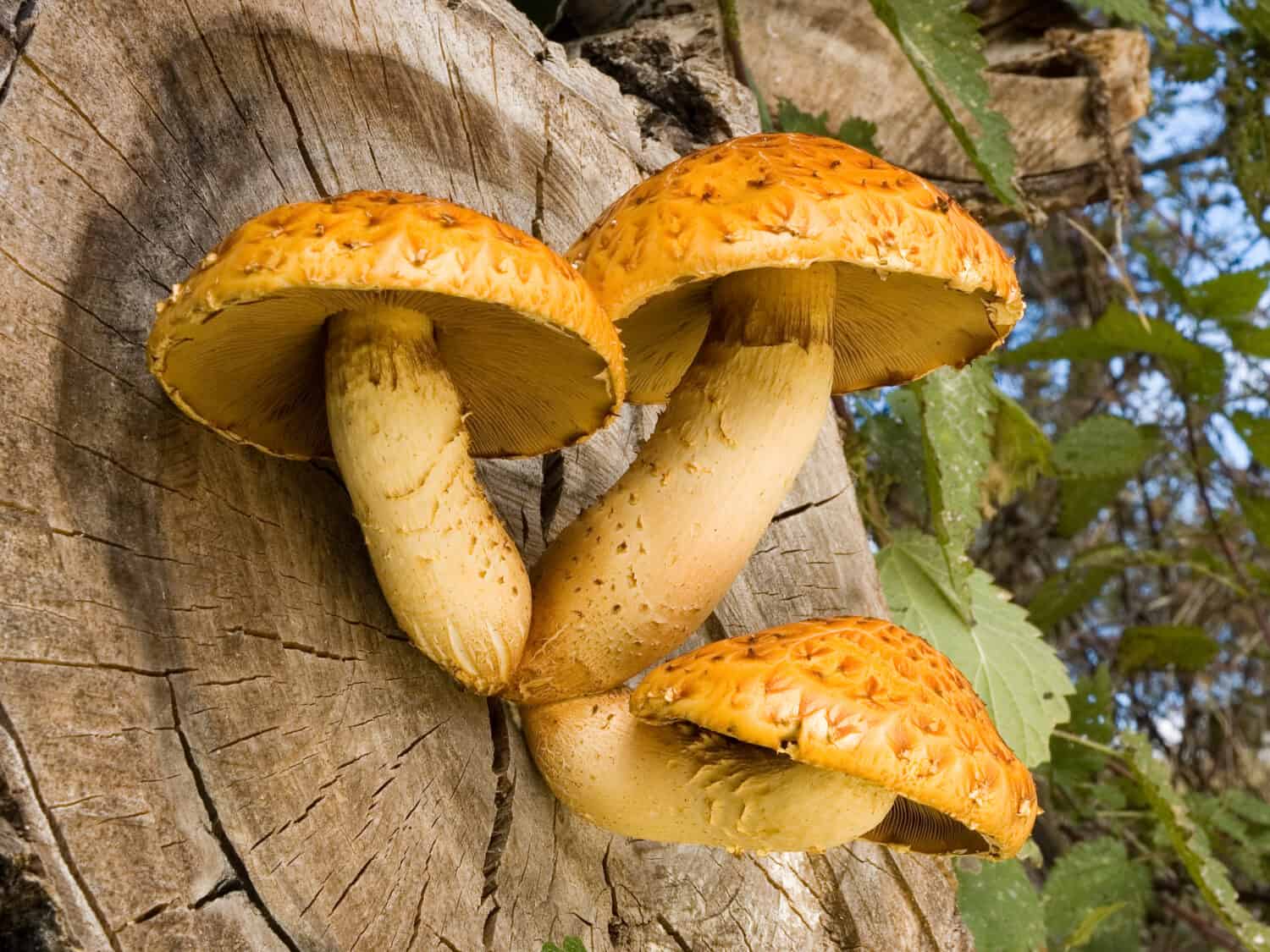
A dense cluster of mushrooms with scales on the cap.
©unclepepin/Shutterstock.com
This fungus produces dense, abundant clusters of mushrooms that feature golden to chestnut-brown caps. The caps are covered in brown scales that become increasingly dense toward the cap center. Especially on young specimens, white partial veil fragments are attached to the scales and cap margin. The caps typically range from 2-4 inches in diameter.
The gills begin pale tan but turn reddish-brown as the mushroom matures. The spore print is reddish-brown.
The stem (aka stipe) color ranges from off-white to pale yellow. The stipe is about .2-.5 inches in diameter and measures 1-2.5 inches tall. Like the cap, the stipe is often covered in soft scales.
Taste
Most folks describe the taste of Pholiota adiposa as nutty and filled with a delightful umami flavor. The texture has an interesting crunch and some people compare the mushrooms to shiitakes, describing them as a crunchier, milder version of the popular culinary mushroom.
How to Grow Chestnut Mushrooms
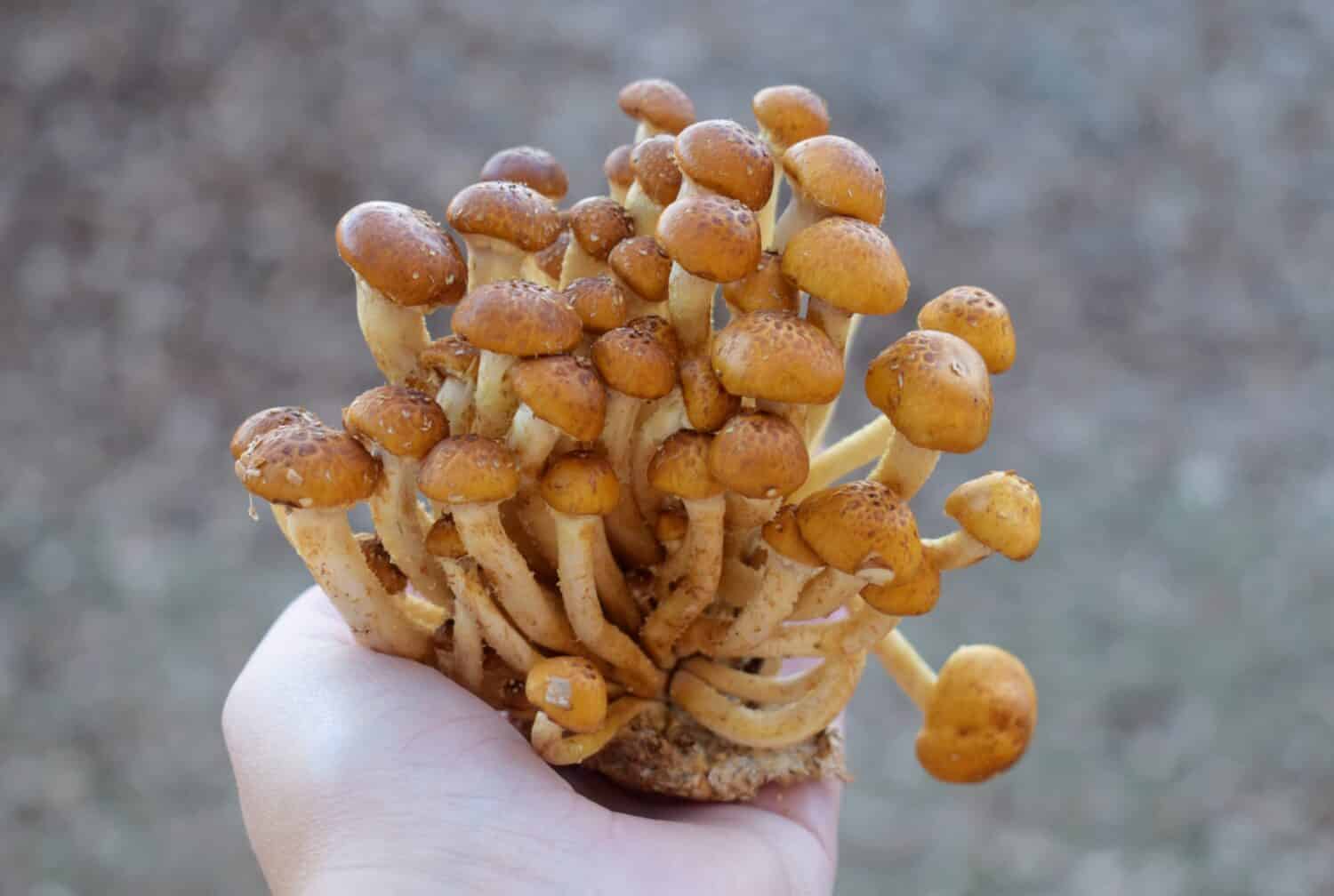
Cultivated chestnut mushrooms resemble the wild ones, but are noticeably different.
©Jstengel/Shutterstock.com
Below, we’ll present a beginner-friendly guide on how to grow chestnut mushrooms at home via hardwood sawdust blocks. You can also grow these mushrooms on hardwood logs in a process similar to growing shiitake mushrooms outside. Since indoor growing is generally more accessible to most folks, we’ll focus on how to cultivate delicious chestnut mushrooms inside.
Grow Kits
The lowest involvement option for cultivating mushrooms at home is to simply buy a grow kit. These grow kits are typically hardwood sawdust blocks fully colonized by the mycelium of the species you wish to cultivate. You’ll usually receive them ready for fruiting. At this point, you’ll simply need to place them in a suitable environment, puncture the sides or open the top of the bag to allow fruiting and ensure that you meet the light, humidity, temperature, and airflow requirements for the species.
If you want to go with a ready-to-fruit kit, you can order a Pholiota adiposa fruiting kit from a variety of online mushroom suppliers.
How to Grow Chestnut Mushrooms: Substrate
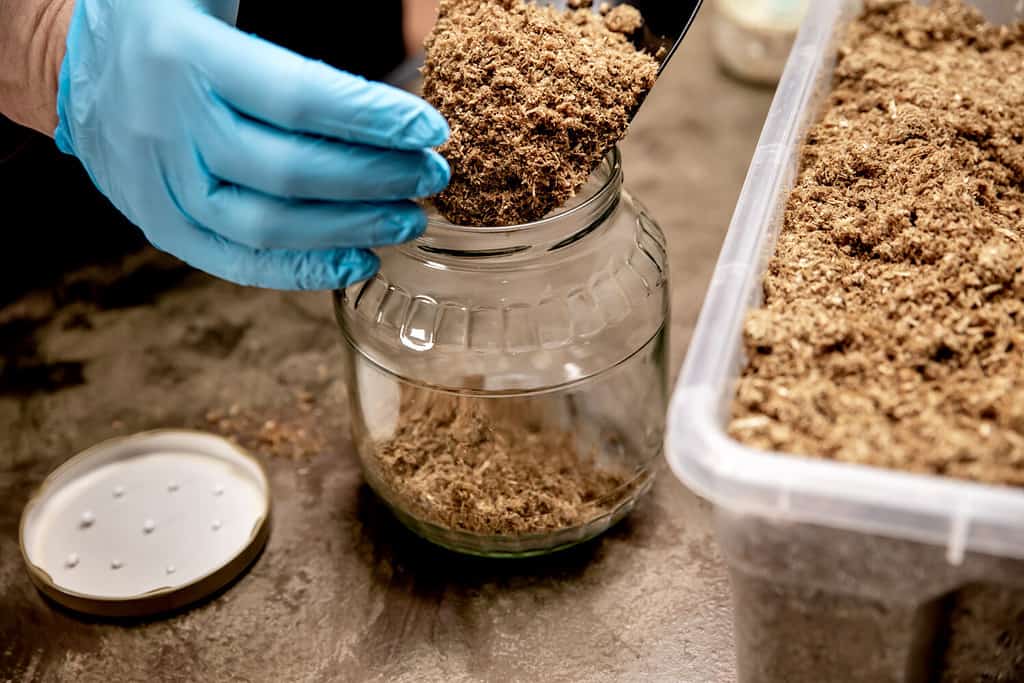
©Miriam Doerr Martin Frommherz/Shutterstock.com
If you choose to not buy a ready-to-fruit kit, you’ll need to inoculate an appropriate substrate with Pholiota adiposa spawn. When growing chestnut mushrooms inside, your best bet is to use a sterilized, supplemented hardwood sawdust substrate. Largely, you’ll find widely available oak sawdust supplemented with rice bran or rye berries.
You could certainly mix your own substrate and sterilize it, but this practice requires several more steps and a high level of sterility. If you don’t sterilize the sawdust substrate, the mycelium will have to compete with a wide variety of other microbes. This will likely result in contamination of your substrate and ultimately a failed cultivation attempt.
As such, for beginners, we recommend purchasing an already sterilized supplemented hardwood sawdust block from mushroom-growing retailers. This block will typically come in a bag with a filter patch that allows for crucial air exchange but blocks airborne microbes, usually down to 2 microns in size. The bag should also come with a self-healing injection port that allows for inoculating the substrate with a liquid mycelium culture.
Inoculating the Substrate
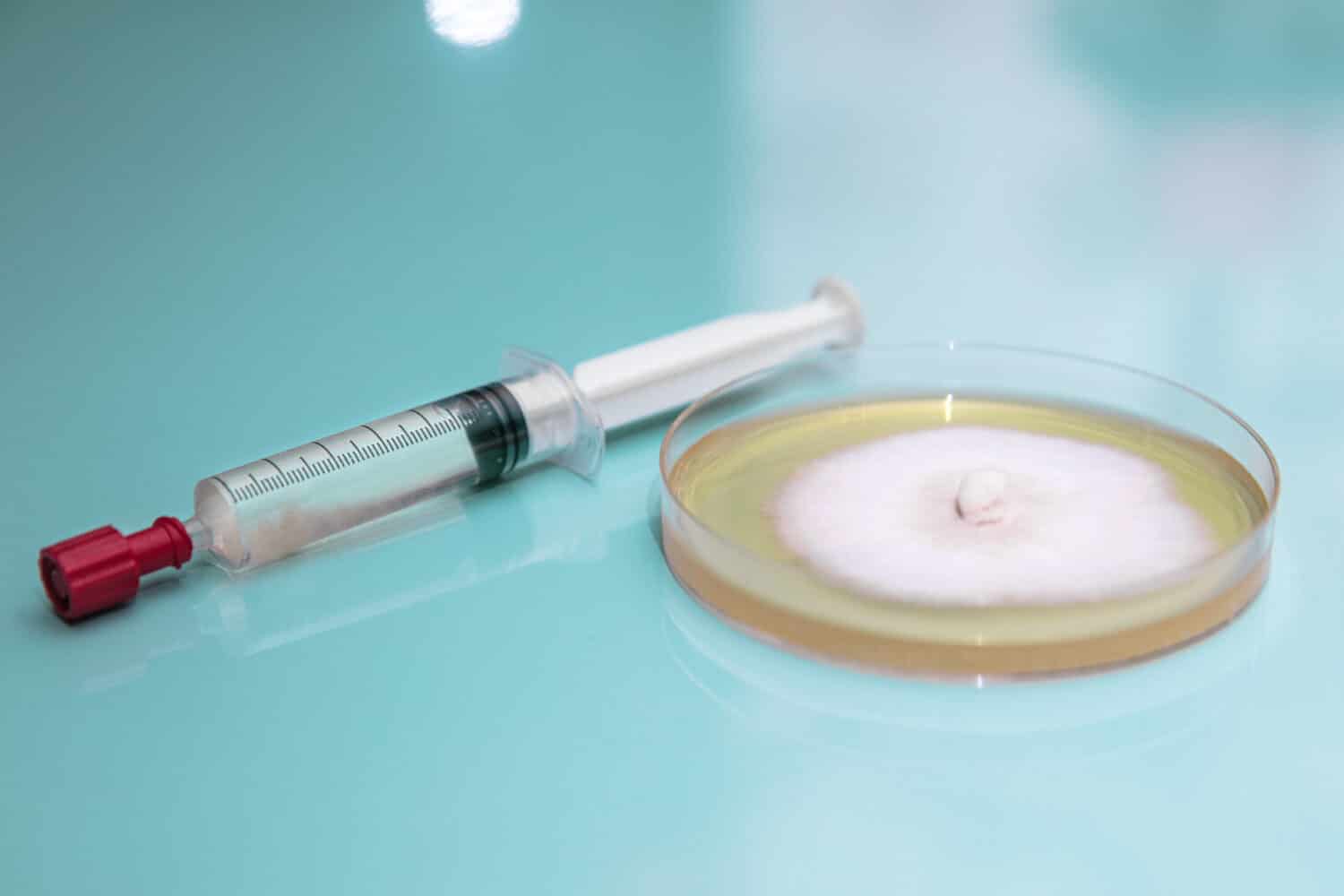
A liquid culture is different than a spore syringe as it is more active and ready to grow.
©Miriam Doerr Martin Frommherz/Shutterstock.com
To grow chestnut mushrooms indoors, you’ll need to inoculate the sterilized, supplemented hardwood sawdust with Pholiota adiposa mycelium. One of the easiest ways to do this is to inoculate the substrate with a liquid culture. You can find and purchase Pholiota adiposa liquid culture online via mushroom-growing suppliers. The liquid culture, usually 10-12ml, comes in a syringe with a sterile needle.
How to Grow Chestnut Mushrooms: Hygienic Practices
When it’s time to inoculate the substrate, you’ll want to make sure you uncap your needle in the most sanitary environment that you can create at home. Some folks use still airboxes to work in. Others use laminar flow hoods, which blow highly filtered air over the work space. Both of these pieces of equipment can be purchased through mushroom-growing retailers.
You can also set up an environment that is sort of like a still air box by working in a small closet that isn’t connected to the HVAC system. With this last option, we definitely recommend re-sterilizing the needle once uncapped by holding it for about 15 seconds in an alcohol lamp or lighter flame.
You should only uncap your needle when you’re ready to inoculate. Make sure to shake up the syringe before uncapping to redistribute the mycelium culture. If you’ve used a flame to re-sterilize your needle, you’ll want to push a couple of drops out of the needle to cool it down before passing it through the self-healing port. Note: if you’re working in a still airbox, definitely do not use an open flame in the box especially if you’re using isopropyl alcohol to sterilize surfaces. The point of the still airbox is that it greatly reduces the ability of airborne microbes to travel through air currents. So, you shouldn’t need to re-sterilize your needle when uncapping it in a still airbox or in front of a flood hood.
Once you inoculate the substrate, you can shake up and redistribute the contents of the bag to ensure the mycelium culture is distributed throughout the bag.
Incubation Period
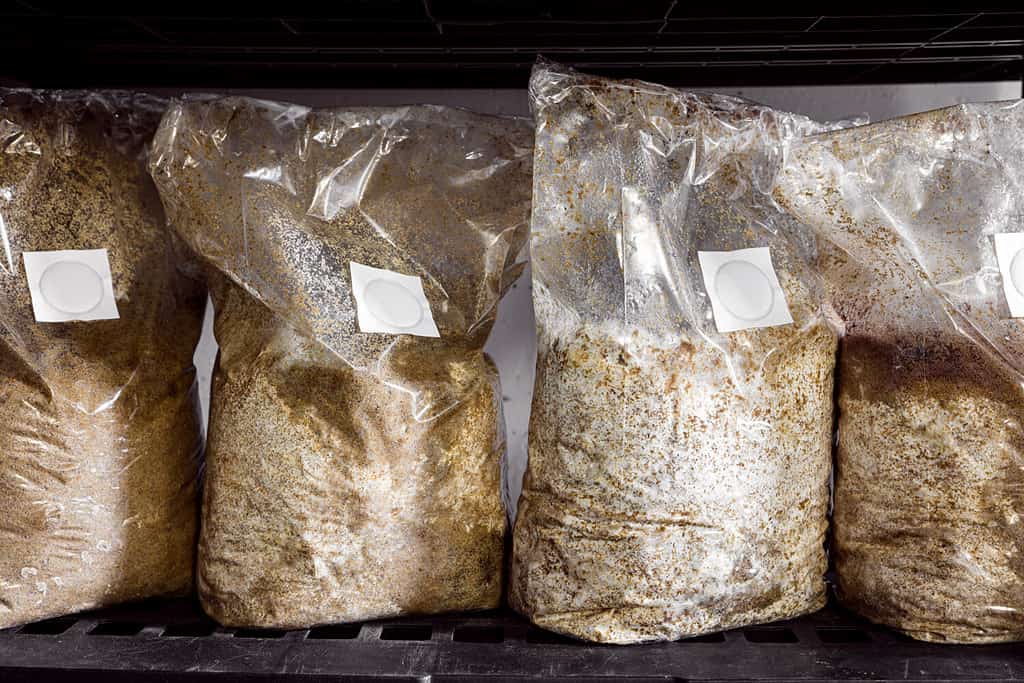
©Miriam Doerr Martin Frommherz/Shutterstock.com
Once inoculated, the substrate goes through an incubation period. During this time, the mycelium should fully colonize the substrate. This colonization is crucial for the mycelium to gain enough nutrients and mass to form mushrooms.
The incubation period for this mushroom species is about 4-6 weeks. You’ll want to set an incubation temperature between about 69-75 degrees Fahrenheit.
You’ll also want to make sure that your supplemented hardwood sawdust grow bag has the filter patch to allow for fresh air exchange. The rest of the bag will be sealed to keep the humidity range between 95-100%.
How to Grow Chestnut Mushrooms: Fruiting Conditions and Harvesting
After the mycelium has fully colonized the grow bag, it’s time to trigger fruiting. You can do this by providing species-appropriate environmental conditions. For Pholiota adiposa, you’ll want to set the following conditions:
- A temperature drop to 59-65 degrees Fahrenheit
- Several 1-2 inch holes cut into the sides of the bag to allow fruiting
- About 85% humidity
- A higher rate of fresh air exchange, which will be met by the slits cut into the bag.
- 8-12 hours per day of indirect sun or comparative artificial lighting
You’ll note that these cool-loving mushrooms require a drop in temperature to trigger fruiting. An air conditioning unit or cool basement can help meet this temperature requirement. This cool temperature range also means they tend to fruit a bit slower. Once the mushrooms start forming it’ll take about 2-3 weeks for them to mature. You’ll want to harvest your mushrooms before the caps start to flatten out.
The photo featured at the top of this post is © unclepepin/Shutterstock.com
The information presented on or through the Website is made available solely for general informational purposes. We do not warrant the accuracy, completeness, or usefulness of this information. Any reliance you place on such information is strictly at your own risk. We disclaim all liability and responsibility arising from any reliance placed on such materials by you or any other visitor to the Website, or by anyone who may be informed of any of its contents. None of the statements or claims on the Website should be taken as medical advice, health advice, or as confirmation that a plant, fungus, or other item is safe for consumption or will provide any health benefits. Anyone considering the health benefits of particular plant, fungus, or other item should first consult with a doctor or other medical professional. The statements made within this Website have not been evaluated by the Food and Drug Administration. These statements are not intended to diagnose, treat, cure or prevent any disease.
Thank you for reading! Have some feedback for us? Contact the AZ Animals editorial team.






